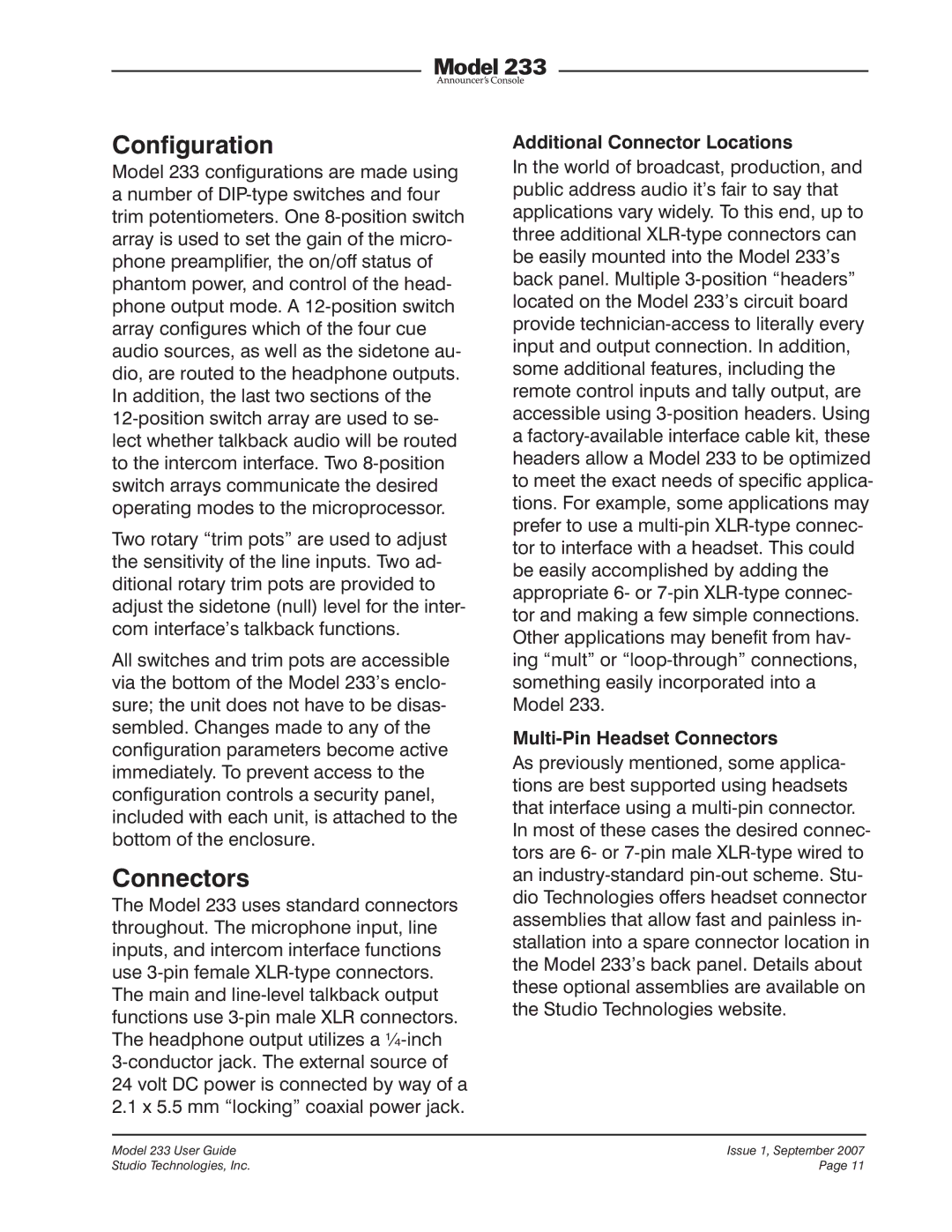Configuration
Model 233 configurations are made using a number of DIP-type switches and four trim potentiometers. One 8-position switch array is used to set the gain of the micro- phone preamplifier, the on/off status of phantom power, and control of the head- phone output mode. A 12-position switch array configures which of the four cue audio sources, as well as the sidetone au- dio, are routed to the headphone outputs. In addition, the last two sections of the
12-position switch array are used to se- lect whether talkback audio will be routed to the intercom interface. Two 8-position switch arrays communicate the desired operating modes to the microprocessor.
Two rotary “trim pots” are used to adjust the sensitivity of the line inputs. Two ad- ditional rotary trim pots are provided to adjust the sidetone (null) level for the inter- com interface’s talkback functions.
All switches and trim pots are accessible via the bottom of the Model 233’s enclo- sure; the unit does not have to be disas- sembled. Changes made to any of the configuration parameters become active immediately. To prevent access to the configuration controls a security panel, included with each unit, is attached to the bottom of the enclosure.
Connectors
The Model 233 uses standard connectors throughout. The microphone input, line inputs, and intercom interface functions use 3-pin female XLR-type connectors. The main and line-level talkback output functions use 3-pin male XLR connectors. The headphone output utilizes a ¼-inch
3-conductor jack. The external source of 24 volt DC power is connected by way of a 2.1 x 5.5 mm “locking” coaxial power jack.
Additional Connector Locations
In the world of broadcast, production, and public address audio it’s fair to say that applications vary widely. To this end, up to three additional XLR-type connectors can be easily mounted into the Model 233’s back panel. Multiple 3-position “headers” located on the Model 233’s circuit board provide technician-access to literally every input and output connection. In addition, some additional features, including the remote control inputs and tally output, are accessible using 3-position headers. Using a factory-available interface cable kit, these headers allow a Model 233 to be optimized to meet the exact needs of specific applica- tions. For example, some applications may prefer to use a multi-pin XLR-type connec- tor to interface with a headset. This could be easily accomplished by adding the appropriate 6- or 7-pin XLR-type connec- tor and making a few simple connections. Other applications may benefit from hav- ing “mult” or “loop-through” connections, something easily incorporated into a Model 233.
Multi-Pin Headset Connectors
As previously mentioned, some applica- tions are best supported using headsets that interface using a multi-pin connector.
In most of these cases the desired connec- tors are 6- or 7-pin male XLR-type wired to an industry-standard pin-out scheme. Stu- dio Technologies offers headset connector assemblies that allow fast and painless in- stallation into a spare connector location in the Model 233’s back panel. Details about these optional assemblies are available on the Studio Technologies website.

